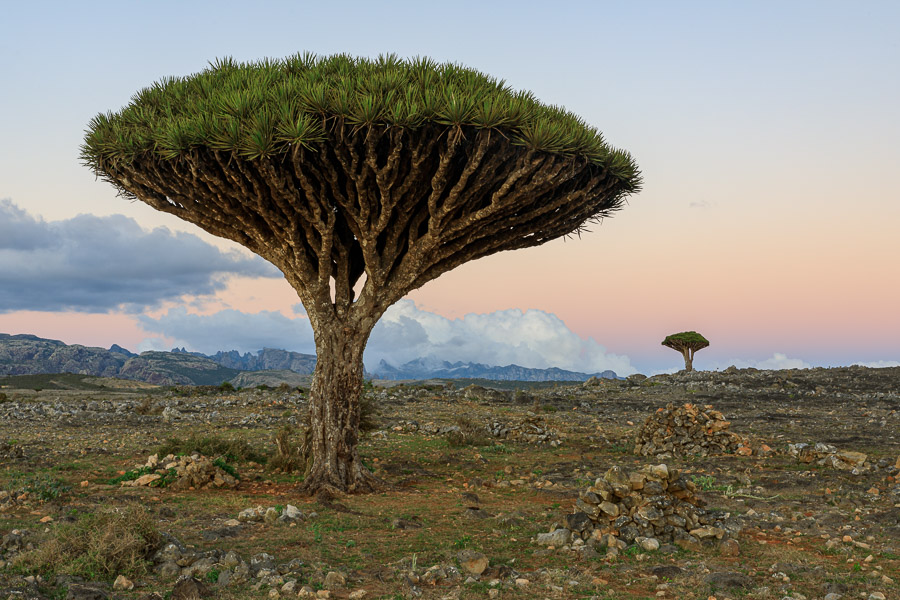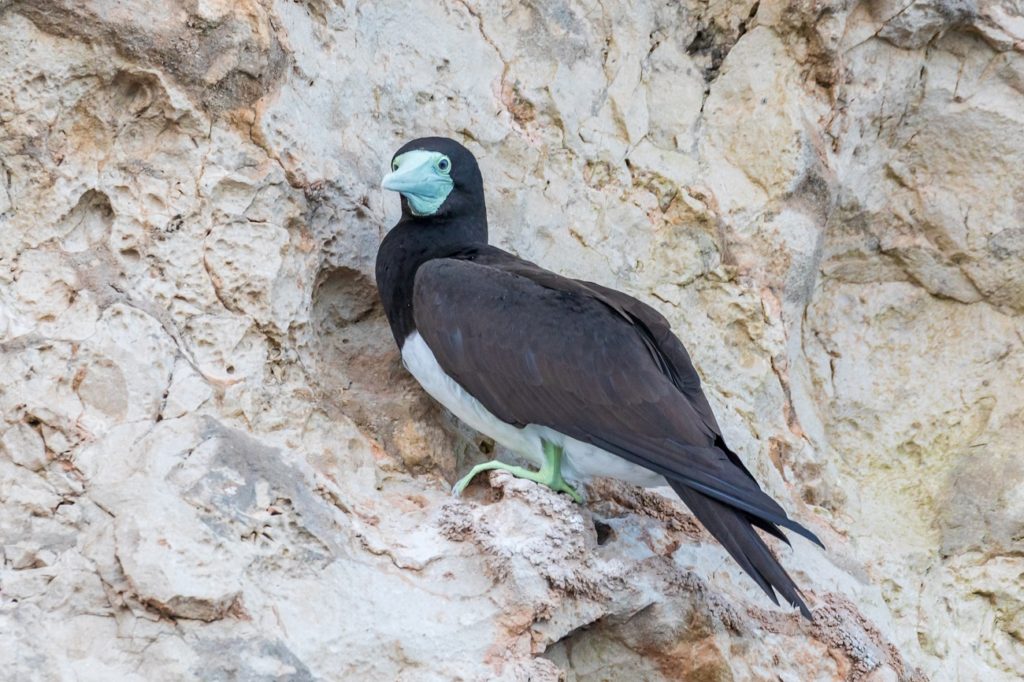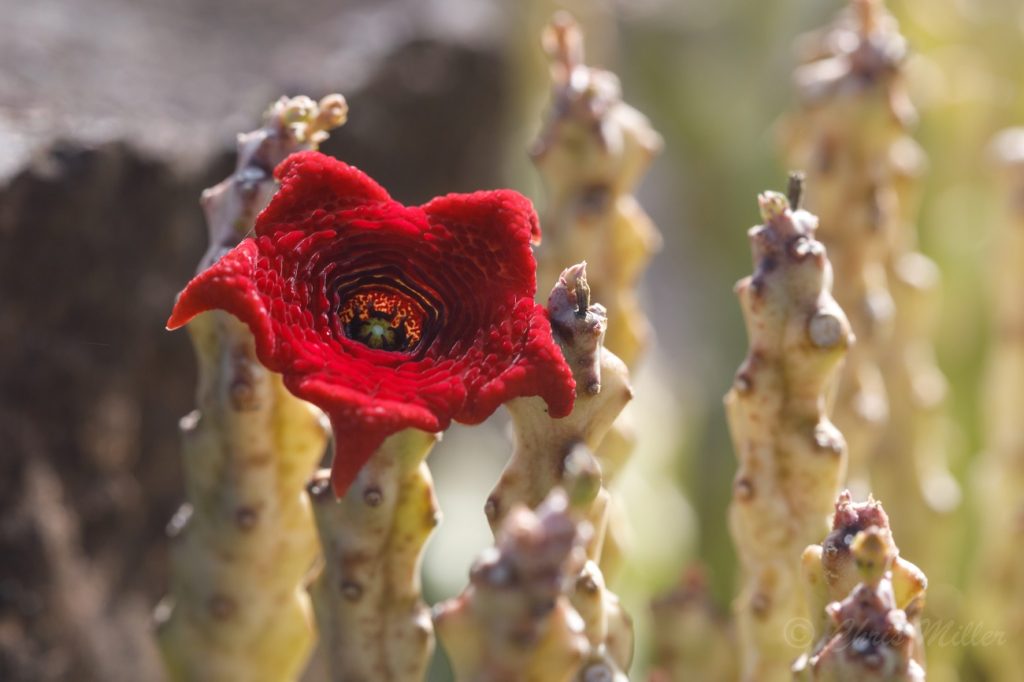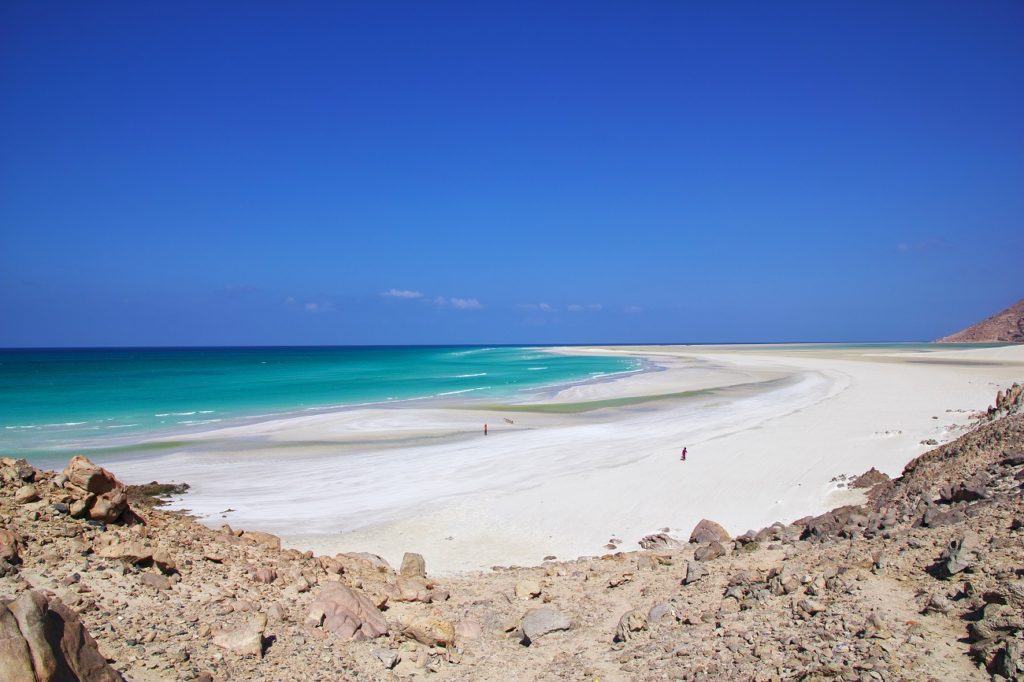Socotra! The largest island in a tiny Yemeni archipelago in the Arabian Sea, little known, hard to reach, undeveloped for tourism, whose name has always held echoes of magic and mystery – and no wonder.
With rocks the colour of strawberry ice-cream, plump desert roses with golden bellies and buttocks, and dragon’s blood trees like old-fashioned darning mushrooms, it is utterly bewitching – a fantasy-film-set of an island, and the ultimate goal of adventure-lovers. Who wouldn’t dream of going there once they know that they can?
Wanted – a guidebook
Until 2020, ‘Socotra’ was my answer to every bucket-list question. Two years ago I realised that if I didn’t go soon I would be too old for this sort of adventure (camping and trekking on an isolated Yemeni island) so I started planning in earnest, despite the fact that no English-language guidebooks existed and information was thin on the ground.
As I learned more and my enthusiasm grew, I managed to interest Bradt’s sensibly commercial publication team in doing a thin photo book of the island. I was only going for a week so it would be very short, I assured them, a pamphlet almost, just show-casing the island’s beauty, and inexpensive to produce.
My plans took shape, a convenient new air route from Cairo was started and I booked the trip. My friend Janice took a surprising interest and to my astonishment announced that she wanted to come and never mind that she would be 81. So we went – and came home fixated on Socotra: its beauty, its multiple endemic species (some call it the Galapagos of the Indian Ocean), its friendly people, and its bizarre landscapes – huge sand-dunes, craggy mountains, serene beaches, deserts, caves – and all crammed into an island not much bigger than Cornwall.

We linked up with experts as obsessed as we were, but infinitely more knowledgeable, who were happy to contribute sections on their specialities so the world could learn about this vulnerable UNESCO World Heritage Site. Janice got stuck in to the history and legend, muttering happily about such things as Gilgamesh, a shipwrecked tiger, Marco Polo, Roman bath-houses, great white snakes and a giant ambergris tree deep in the ocean.

And of course the book grew and grew. Photographers and fellow travellers offered us superb images, and our seven experts (five with doctorates) provided sections on plants, birds, reptiles, folklore and archaeology and more. The many endemic species (trees, birds, flowers, insects…) are described, and the huge variations of the island’s fantastic landscapes. Our once slim little guide to Socotra was becoming a unique and substantial source of information.
Uh-oh!
And then COVID-19 struck: less than a month after our return home we went into lockdown. We continued working on the book as though everything was normal, and as if a company experiencing a 75% drop in sales (and revenue) would have no qualms about producing a gorgeous, full-colour guide to a place few people have heard of.

Looking at the projected costs, the Bradt team said firmly that either publication should wait until the end of 2021, when hopefully things would be getting back to normal, or we could have a cut-cost version with just a few photos.
Neither option appealed to two obsessed writers, but we weren’t in a position to argue. Everyone we told about the book became intrigued and the Royal Geographical Society booked us for a talk…
A new urgency
And then in June the situation subtly changed. Strategically valuable as a political or military base (it straddles the Arabian Sea and Indian Ocean and is close to major shipping routes), Socotra suffered a non-violent coup in which the UAE-backed Southern Transitional Council (who want home rule for South Yemen) displaced the UN-recognised Yemeni government team.

Never mind the rights and wrongs of this ongoing power struggle, which has been simmering for quite a while; the crux is that the resulting instability threatens Socotra’s future, its unique plants and wildlife, and its status as a World Heritage Site. Roads had already been cut through precious archaeological sites, and now military posts are being built.
Its superb, pristine beaches could so easily attract mindless mass tourism, bringing big hotels and damage to coastal habitats. The local people believe in eco-tourism, sympathetic to the environment and protective of their natural and cultural heritage, but their voices count for nothing amid the political power-play.
However, we (and that means you) can make a difference!
The outside world knows little of the impending danger, but we can change this. Our guidebook can raise Socotra’s profile, so that inappropriate political manoeuvres are more visible. The book will also bring more international tourists to the island, who in turn can affect public opinion. They will arrive better informed, understanding why Socotra is unique. And increased tourism will mean – it always does – that the natural resources for which the tourism exists will receive greater protection.
So hello Bradt supporters! The gorgeous full-colour book is sitting, completed, in our computers now and just needs your help – and money! – in order to be published in October, not only for dreamers and adventurers but also to make those in power more respectful of Socotra’s heritage. Please, join us in saving the future of this very special little island.
More information
You can help crowdfund Hilary and Janice’s guidebook to Socotra by visiting their Crowdfunder page. You can donate as much or as little as you can afford – every penny helps! Rewards on offer range from an ebook to exclusive discounts off a trip to Socotra or any other destination offered by the Inertia Network.